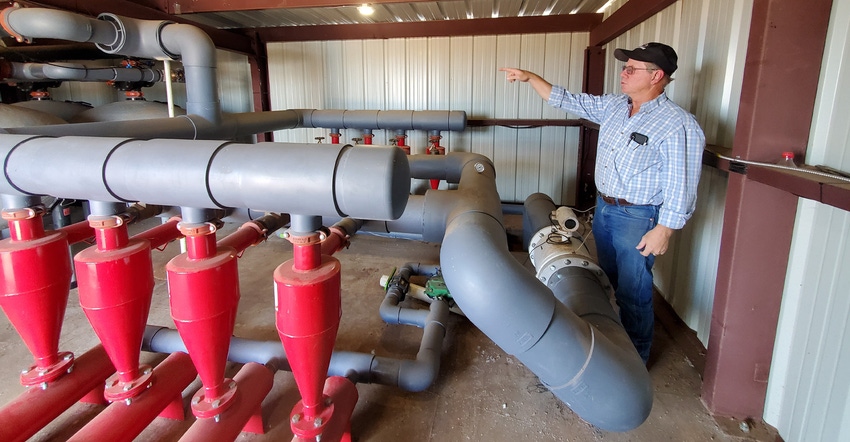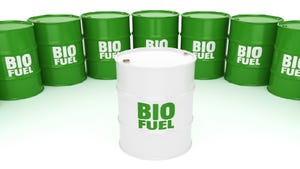
Subsurface drip irrigation offers some significant benefits, but Southwest producers should thoroughly research the pros and cons before making what can be a big investment.
Oklahoma State Extension engineer Saleh Taghvaeian explains the advantages and the drawbacks.
Subsurface drip is used to irrigate bermudagrass with treated swine effluent. (Photos by Saleh Taghvaeian)
“Drip irrigation improves water use efficiency,” Taghvaeian said. “Compared to furrow irrigation, drip results in less surface water runoff and reduced evaporation.”
He adds that many pivot irrigation systems across Oklahoma apply small amounts of water, most of which is captured by the canopy or in the top few inches of the soil, not in the root zone.
“Roots tend to stay shallow, and during hot, dry periods, roots are not deep enough to take up moisture. With drip, if we get the seed to germinate, we have water in the rootzone. That’s a major advantage.”
He said automation is easier with drip irrigation and the system offers more flexibility. “Drip systems may irrigate every day, or five days with two days for maintenance. If rain is forecast, producers may turn off the system. Other systems are not that flexible.”
He said drip irrigation is easier to integrate with smart management systems.
A major benefit, he adds, is reduced labor demand. “Labor requirements are less compared to center pivots. Maintenance is not as big an issue. Center pivots, with all the moving parts, require more maintenance and more labor.”
Key considerations
Taghvaeian said producers should consider some key issues before committing to drip irrigation installation.
“One of the main concerns is capital cost,” he said. “Drip systems have the largest capital cost. If the system is properly maintained, however, research shows a better or at least an equal return on investment compared to center pivots.
“The initial capital investment is larger, but drip could show a significant advantage if well maintained, especially where water is short.”
He said in the key Southwest Oklahoma irrigation district, near Altus, furrow irrigation results in a significant amount of runoff that goes back to drainage ditches. “Drip can apply all the water and offers more flexibility.
“Land ownership may be a barrier. Producers who do not own the property might not want to invest in something that stays in place.”
Maintenance, though not as big an issue as with pivots, is still crucial. “It’s not as easy to see a problem with subsurface drip as it is with a center pivot where farmers can see clogged nozzles or other glitches. Drip systems are underground, so we don’t see problems until too late. Gophers, rodents, etc. can damage lines.”
Start small
He recommends producers start small to see what maintenance issues arise and how difficult those issues are to manage.
Taghvaeian recommends farmers interested in drip irrigation do some research. “Look at other systems in the area and talk to other producers who have drip. Also, look into NRCS to see if cost share programs are available.”
He also recommends visiting with dealers and contractors. “Shop and compare. Look for a company with a proven record of installation and support. Also, check for online tools to analyze costs and benefits. Run some numbers.”
Taghvaeian said drip irrigation works well on most Oklahoma crops. “Subsurface drip works well with cotton, especially in years with limited heat units. Drip irrigation does not wet the canopy, and the soil surface remains dry and retains a little more heat. Not wetting the canopy also helps with some disease management.”
Latest figures from USDA indicate about 12,000 acres of drip installed in Oklahoma. That figure has not changed significantly since 2008, when most of those acres were installed. Of the 40,000 irrigated acres in the Altus area irrigation district about one-third is in drip.
“Statewide, drip accounts for about 2% of total irrigated acreage,” Taghvaeian said.
About the Author(s)
You May Also Like






